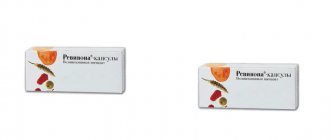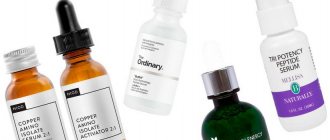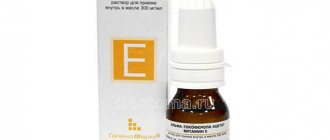Vitamin D and skin pathologies are closely interrelated. The effect of solar vitamin deficiency on the development of atopic dermatitis is discussed in the joint research work “The Impact of Vitamin D Deficiency on the Development of Skin Pathologies” by the Moscow Center for Theoretical Problems of Physicochemical Pharmacology of the Russian Academy of Sciences and the Moscow Scientific and Practical Center of Dermatovenereology and Cosmetology of the Moscow Department of Health.
Vitamin D and skin pathologies. What is the relationship between them?
Vitamin D can become a reliable remedy as part of complex therapy for atopic dermatitis. It is able to suppress inflammatory reactions, stimulate the production of a natural antibiotic - antimicrobial peptide, and improve the protective properties of the skin. However, scientists are sounding the alarm: are vitamin D and skin pathologies making themselves known more and more often? Nowadays, the problem of vitamin D deficiency is becoming truly global. This is due to the widespread belief that a lack of vitamin D is very rare and that the rays of the sun do not so much benefit the human body as harm it.
In an effort to protect themselves from such negative influences, people try to spend less time under the sun and apply all kinds of sunscreens to their skin. Experts are confident that replenishing reserves of this vital vitamin does not require prolonged exposure to the sun. 15-30 minutes is enough. You can do it even simpler - take nutritional supplements with vitamin D. Osteomed Forte and Osteo-Vit have proven themselves to be quite good. The first supplement is indicated for a combination of atopic dermatitis with reduced bone mineral density, the second for a slight vitamin D deficiency.
Authors: E.V. Dvoryankova1, Doctor of Medical Sciences, leading researcher, A.L. Piruzyan1, Doctor of Medical Sciences, Prof., Chief Researcher, K.T. Plieva2, dermatovenerologist, I.M. Korsunskaya1, Doctor of Medical Sciences, Prof., Head. lab., V.V. Nikonorova3, ass. Department of Pediatrics.
1Center for Theoretical Problems of Physico-Chemical Pharmacology, Russian Academy of Sciences, Moscow 2Moscow Scientific and Practical Center of Dermatovenereology and Cosmetology, Moscow Department of Health 3Penza State University, Department of Pediatrics
What foods contain vitamin D (D)
With proper nutrition, our body receives useful substances, but the component we are talking about in this article is quite scarce. Its presence in foods is low and there are very few products that contain it compared to other vitamins that can be found in many everyday foods.
Where to find vitamin D (D)
- fatty fish (herring, salmon, sardines in oil, tuna and others);
- fish fat;
- caviar;
- cheese;
- milk or dairy products;
- butter;
- beef;
- liver of fish and animals;
- egg yolk;
- nettle;
- parsley;
- mushrooms;
- yeast.
What vitamins are most beneficial for women?
The body requires all vitamins; it suffers from a deficiency of any group. Therefore, it cannot be said that women require a specific complex. But you can easily identify a lack of specific vitamins in the body by assessing the condition of your skin and guessing what kind of help it needs.
Vitamin A (retinol)
Vitamin A has antioxidant effects. It is also able to maintain skin tone, protect against ultraviolet radiation, and strengthen blood vessels. In addition, the component is responsible for cell regeneration and collagen production, so it is especially useful for women over 40. Products with vitamin A are also suitable for those who suffer from acne - it can even out skin tone and lighten it. Most often in cosmetics it is found in the form of retinol or retinoic acid.
Vitamin B
These vitamins are the largest group among others. In medicine, the component is needed to combat neurological diseases. As for cosmetology: experts assure that this vitamin is also beneficial for the skin. First of all, to slow down the aging process.
Vitamin B1 (thiamine)
As already mentioned, in medicine, vitamin B is present in various medications in neurologist prescriptions. The condition of the skin directly depends on the functioning of the nervous system. When a person is stressed, the dermis becomes inflamed, redness and acne appear. Thiamine soothes the skin, prevents premature aging, eliminates flaking and dryness.
Vitamin B2 (riboflavin)
The area of responsibility of this vitamin is cell renewal. Riboflavin deficiency is easy to recognize and manifests itself as follows:
- jams appear in the corners of the lips (angular stomatitis), the skin becomes dry and cracks;
- dandruff forms on the head;
- the dermis of the face becomes dull;
- the skin is very flaky, this is especially noticeable in the area of the wings of the nose.
A severe deficiency of vitamin B2 can lead to dermatitis, a serious disease that is difficult to treat.
Vitamin B3 (vitamin PP, niacin or niacin)
This component protects the skin from harmful external influences, soothes it, moisturizes it, and makes it softer. After use, the dermis retains moisture for a long time, age spots become lighter, and the process of elastin and collagen production accelerates. Nicotinic acid is often included in anti-aging cosmetics.
How does its deficiency manifest itself?
- inflammation appears on the skin;
- the dermis peels off;
- swelling forms under the eyes.
Vitamin B5 (panthenol)
The composition is responsible for rapid tissue regeneration, stimulates the production of elastin and collagen, heals wounds, and improves local immunity. Vitamin B5 relieves inflammation on the skin, eliminates swelling, makes the dermis moisturized, preventing dryness. In large doses, panthenol is used to treat acne.
Vitamin B6 (pyridoxine)
The component is widely used for the treatment of dermatological diseases: it is not surprising that it has found application in cosmetology. Pyridoxine is responsible for the absorption of unsaturated fats and proteins, which are especially beneficial for the skin. Vitamin B6 deficiency manifests itself as follows:
- peeling of the skin;
- jams in the corners of the lips;
- the appearance of “dry flakes” above the eyebrows and near the nose;
- the occurrence of dermatitis.
Vitamin B7 (vitamin H, biotin)
The vitamin has an antioxidant effect, it quickly restores connective tissue, strengthens the barrier function, makes the skin elastic and healthy in appearance, and evens out the tone.
How to recognize biotin deficiency?
- the skin becomes pale;
- peeling appears;
- hair falls out a lot;
- the dermis becomes inflamed;
- nails break easily and can crumble if there is an acute deficiency.
Vitamin B7 deficiency is rare because it is found in a large number of foods. It can occur due to overly strict diets, veganism, and certain diseases.
Vitamin B9 (folic acid)
Folic acid is responsible for strong nails, hair, elastic and healthy skin. The component is indispensable for women, it has antioxidant properties, relieves inflammation, prevents the harmful effects of ultraviolet radiation, lightens age spots and prevents their occurrence, accelerates collagen production.
A lack of folic acid can be recognized by the following signs:
- excessive hair loss;
- peeling of the skin;
- dull appearance;
- occurrence of cracks.
- the appearance of acne.
By the way, the human body is not able to synthesize vitamin B9 on its own, so products with folic acid should be in every cosmetic bag. The component should also be obtained from foods: spinach, tuna, bananas, liver, peanuts.
Vitamin B10 (H1, para-aminobenzoic acid)
The vitamin is most often included in after-sun cosmetics, as it minimizes the negative effects of aggressive sun rays. The component is also added to shampoos, masks and hair balms - para-aminobenzoic acid prevents hair loss. Vitamin B10 is also used in medicine, for example, to treat vitiligo, a disease that is expressed by pigmentation disorders.
Vitamin B12 (cyanocobalamin)
It is considered a rejuvenating component, as it starts the process of tissue regeneration. Vitamin B12 is responsible for saturating tissues with oxygen; without it, the complexion becomes dull and the skin ages quickly.
Vitamin C (ascorbic acid)
Being a powerful antioxidant, ascorbic acid is included in a huge number of products. Vitamin C can be called universal: it is responsible for a whole list of important processes. Thus, it protects the skin from premature aging, lightens age spots, promotes collagen production, heals damage, relieves inflammation and strengthens vascular walls, making mesh and stars disappear. Vitamin C is also widely used to create hair cosmetics.
By the way, ascorbic acid is found not only in citrus fruits; its deficiency can be compensated for by kiwi, red pepper, black currant, tomatoes and onions.
As for cosmetics with ascorbic acid, it has some contraindications. People prone to allergies should use the products with caution, as vitamin C can cause a skin reaction. It should not be used by those who have been diagnosed with diabetes or have blood clots.
Vitamin D (calciferol)
This vitamin is extremely rare in ordinary cosmetics, but it is widely used in medicinal products. The fact is that it is a hormone. Its acute deficiency is observed during menopause, so it is often prescribed to women as a dietary supplement. Depending on the condition of the skin, the doctor may also suggest products with calciferol. It slows down the process of aging and fading of the dermis, evens out tone, supports cell renewal, relieves inflammation, and strengthens local immunity.
Vitamin D enters the body through sun rays, but dermatologists urge protecting the skin from ultraviolet exposure by using sunscreen. A contradiction arises: it is important for the skin, but exposure to the sun aggressively affects its condition. Therefore, it is recommended to obtain calciferol from foods: milk, mushrooms, eggs, parsley, caviar and fish oil.
Vitamin E (tocopherol)
It has antioxidant properties, eliminates acne, maintains youthful and beautiful skin, and promotes the production of vitamin A. Tocopherol strengthens vascular walls, so it is indispensable for owners of stars and mesh.
Vitamin E is often included in products for the delicate skin around the eyes: it gets rid of bags and swelling, eliminates dark circles and tightens the dermis. The component is also effective in combating age spots and moisturizes connective tissue well.
Vitamin F (linoleic acid, omega-6)
With a deficiency of vitamin F, pigmentation occurs, the skin becomes dehydrated, acne appears, a diagnosis of “dermatitis” or “psioriasis” can be made, nails become brittle, and acne is observed not only on the face, but throughout the body.
Linoleic acid is responsible for cell renewal and skin restoration. It promotes wound healing, relieves inflammation, and retains moisture for a long time. Omega-6 is often included in products recommended for use in winter - the skin's reaction to temperature changes is noticeably reduced.
Vitamin K (menaquinone)
The component improves blood circulation, so it is widely used to create creams and ointments against bruises and wounds. It is also used to get rid of stretch marks and scars, so the product is often prescribed to women after pregnancy. Cosmetics with vitamin K help fight puffiness, bags under the eyes, spider veins, and age spots.
Menaquinone relieves inflammation and makes the vascular network less pronounced. The body can only synthesize a small amount of vitamin K, so it must be supplemented.
Vitamin N (lipoic acid, thioctic acid)
The lack of a component leads to the fact that the skin quickly becomes dehydrated and loses its youth and elasticity. Inflammation and acne appear on the dermis. Lipoic acid is included in many sunscreens and after-sun cosmetics - it can replenish the lack of moisture.
Vitamin P (rutin, citrine C-complex, bioflavonoids)
The effect of vitamin P is similar to the effect of ascorbic acid on the skin, so manufacturers of products often use rutin instead of vitamin C. Sometimes the components are combined - this allows you to deal a “double blow” to spider veins and inflammatory processes.
Bioflavonoids are less allergenic, so they can be used in formulations for sensitive skin.
Vitamin PP (niacin)
The component is necessary for women who dream of long and strong hair - it promotes the rapid growth of curls. Nicotinic acid is also widely used in skin cosmetics: it relieves dryness, evens out tone, removes flaking, makes the dermis smooth and controls the functioning of the sebaceous glands.
With a lack of vitamin PP, inflammation appears on the skin and it becomes very flaky. In case of acute deficiency, even moisturizing creams do not help with dryness.
Shortage in the body
In autumn and winter, our body is susceptible to a deficiency of this component in our body. This can be easily explained by the low activity of the sun, and there is little of it in products. It is formed in the body precisely due to the effect of ultraviolet rays on the skin.
Daily norm per day 10-15 mcg = 400-600 IU
A deficiency in the body is dangerous due to the lack of functions that should be performed with its participation. The fact is that thanks to its presence in the body, the work of calcium saturation is normalized, which performs a number of obviously important functions. A small amount of calcium in the body is dangerous for children, pregnant women and the elderly. With age, it is more difficult to saturate the body due to weak receptor activity. The lack of vitamin has a detrimental effect on the functioning of the nervous system.
Its absence in sufficient quantities also has a negative impact on the skin. It controls the resistance of the epidermis from external irritants and controls the water level in the cell structure. It is necessary to note the normalization of processes and active metabolism. We also draw attention to its participation in the skin alternately passing through three basic stages: the synthesis of new cells, keratinization and renewal through the gradual death of keratinized parts. The last stage is usually barely noticeable, so don’t be put off by the name. Protein synthesis is impossible without the presence of vitamin D (D).
Acute deficiency can cause a number of serious diseases: rickets, softening of bones and others.
Milder stages are accompanied by other symptoms:
- decreased quality of visual receptors;
- irritability;
- weakening of muscle tone;
- insomnia;
- burning in the mouth;
- weight loss due to lack of appetite, accompanied by nausea, and individual symptoms are also possible.
If you often use sunscreen or other products when caring for your skin, try to do such procedures less often. Strong sunscreens cause vitamin D deficiency, which can then have a detrimental effect on your health. After all, the sun is its main source.
Vitamin D for women
Vitamin D is one of the most unique biologically active substances that takes part in physiological processes in the human body. In its structure and functions, it is rather a hormone that is partially produced in human skin when it is irradiated with ultraviolet rays, partially comes with food and performs up to several dozen very diverse tasks: from the regulation of calcium metabolism to participation in the processes of synthesis of sex hormones and stimulation of the immune system. . Given the huge role of vitamin D in the body, it is important to maintain its level in the blood within optimal values. At the same time, despite the fact that it is synthesized in the body, in our latitudes the intensity of ultraviolet radiation is relatively low and is insufficient for the synthesis of a sufficient amount of vitamin D. It is also known that there are not enough vitamins and microelements in everyday food, even with a balanced diet. Therefore, in addition to proper nutrition and sunbathing, it may be advisable to take an additional Vitamin D supplement, such as Minisun Vitamin D3. Vitamin D is essential for the health of every person, regardless of gender and age. But still, in the female body it plays its own special role. Which one? Let's find out!
A unique vitamin for women
Why do women need vitamin D? Of course, the female body, just like the male one, needs to regulate the metabolism of phosphorus and calcium, which has a direct effect on the condition of bones, ligaments, muscles, and the functioning of the cardiovascular system. However, in addition to the “classical” effect of vitamin D, there are also “non-classical” ones. These include all other effects of cholecalciferol. For women, the special value of this vitamin lies in its effect on the reproductive system, as well as on a woman’s appearance. Maintaining body weight within the physiological norm, smoothness, elasticity and firmness of the skin, beauty of hair and nails - all this is also effective due to a sufficient level of vitamin D in a woman’s blood! This unique substance, whose molecular structure and “behavior” in the body resembles a hormone, directly affects the metabolism as a whole, and through it, indirectly, the entire female body. Therefore, it is not surprising that vitamin D is called the “female” vitamin and is considered one of the “beauty vitamins.”
The role of vitamin D in a woman’s body
Let's look at the effect of vitamin D on different areas of the female body.
Reproductive system
In the female body, cholecalciferol has a direct effect on the state of the reproductive system. Modern research has revealed the presence of vitamin D receptors in the tissues of the ovaries, fallopian tubes, and endometrium. It is already known that without a sufficient level of cholecalciferol in the blood, normal conception, gestation, and the birth of a healthy baby become impossible. Vitamin D deficiency often accompanies endometriosis, polycystic ovary syndrome, and uterine leiomyoma. It is reliably known that the likelihood of a successful outcome of the IVF procedure is higher in women with sufficient levels of vitamin D in the blood.
Musculoskeletal system
It is known that a woman’s hormonal background is directly related to the condition of her bone tissue. In particular, during menopause, osteoporosis gradually develops - pathological fragility of bones associated with impaired calcium metabolism. At the same time, an additional load is regularly placed on a woman’s musculoskeletal system throughout her life. This includes wearing shoes with heels, which leads to a shift in the center of gravity of the body, and some purely “female” professions (hairdresser, sales consultant, teacher) that require prolonged standing on their feet. And finally, this is pregnancy and subsequent motherhood - the child is first inside the mother’s body, and then, for several years, mainly in her arms. All this, of course, becomes a serious additional burden on the woman’s bones, joints and muscles. Constantly maintaining a sufficient level of vitamin D in the body (of course, in combination with a sufficient amount of calcium) is an important condition for effective bone tissue regeneration and the prevention of osteoporosis.
Skin, hair and nails
The condition of the skin and its derivatives (hair and nails) directly depends on the balance of calcium and phosphorus. Accordingly, a sufficient level of vitamin D is one of the conditions for healthy skin, its regeneration, preservation of tone and elasticity, absence of flaking, as well as soft hair, strength and beauty of nails.
Body mass
Vitamin D is essentially one of the hormones that simultaneously regulates fat and carbohydrate metabolic processes. It is known that vitamin D is one of the factors that prevents the development of type II diabetes mellitus. In addition, vitamin D deficiency can provoke the accumulation of excess amounts of adipose tissue in the body, which, in turn, is itself a hormonal-dependent object.
General state
Life confronts the modern woman with many tasks and challenges that require significant mobilization of strength and a high level of energy. Under these conditions, it is not uncommon to feel a feeling of chronic fatigue and weakness, which is usually attributed to banal overwork. However, it is already known that it is not only a matter of fatigue, but also metabolic disorders in the body. In particular, phosphorus deficiency, which can occur with low levels of vitamin D, which is responsible for its metabolism, is manifested by a feeling of chronic fatigue, inability to concentrate, and decreased performance.
The immune system
The exceptional role of vitamin D in the regulation of all parts of the immune system has been proven. We should not forget about another important function of the immune system: it provides not only protection against infections, but also protection against the occurrence of tumors, promptly destroying “defective” cells that can become a source of tumors. Of course, a strong immune shield is important for any person, but a woman is more often faced with factors that reduce it - in particular, during pregnancy and breastfeeding. Therefore, supporting immunity by taking vitamin D is especially important for women.
C symptoms of vitamin D
How does a lack of vitamin D manifest itself in a woman’s body? Based on the functions that cholecalciferol performs in the body, there are quite characteristic signs, in the presence of which it is recommended to immediately consult a doctor, check the level of cholecalciferol in the blood, determine the reasons for its decrease and, accordingly, determine a treatment program.
The main symptoms of vitamin D deficiency in women:
- pain in muscles, bones, joints, aches, muscle weakness (most often discomfort and pain in the limbs);
- frequent fractures and their prolonged healing, osteoporosis or osteomalacia (softening) of bone tissue;
- decreased immunity, frequent acute respiratory viral infections, food poisoning, frequent exacerbations of chronic infections;
- peeling of the skin, allergic reactions, fragility, dullness of hair and nail plates;
- disorders in the reproductive sphere, decreased fertility;
- disruptions of carbohydrate and fat metabolism - impaired glucose tolerance, type II diabetes mellitus, excess body weight;
- general weakness, chronic fatigue, lethargy and decreased performance.
It is worth considering that the causes of vitamin D deficiency can be different. Most often, this is a low intake of it into the body, a low level of synthesis - the entire territory of Russia is located north of the 37th parallel, which is considered the border south of which residents receive enough sun for adequate synthesis of vitamin D. There is not enough vitamin D in our everyday food.
In addition, the causes of cholecalciferol deficiency may be:
- periods of increased need for vitamin D (pregnancy, lactation, recovery from illness, old age);
- impaired absorption of vitamin D in the gastrointestinal tract (due to diseases or after certain operations);
- taking certain medications (for example, rifampicin).
Having identified a vitamin D deficiency, it is imperative to determine its cause - this is the only way to ensure effective restoration of the optimal level of cholecalciferol in the blood.
A test for the content of vitamin D in the blood The level of vitamin D in a woman’s blood can be determined by conducting an analysis for the content of 25-hydroxy-cholecalciferol. To do this, blood is taken for analysis on an empty stomach (for 10 hours before blood collection, it is recommended not to eat or drink anything other than water - including tea, coffee, sweet carbonated drinks and juices). The normal level of vitamin D in the blood of women is 20-60 ng/ml (50-150 nmol/l). When the level of cholecalciferol decreases below 10 ng/ml, they speak of vitamin D deficiency - given the role of this substance in the normal functioning of the body, this condition requires immediate correction.
How to increase the level of vitamin D in the blood to optimal levels?
There is a widespread stereotype that vitamin D is already synthesized in the body, and therefore its additional intake is not necessary. But this is not entirely true: as already written above, the entire territory of Russia belongs to the zone of insolation insufficient for the synthesis of vitamin D. Moreover, in addition to the participation of ultraviolet radiation in the production of cholecalciferol, these rays also pose a danger: their excess provokes premature aging, their role in oncological pathologies of the skin has been proven. Therefore, deliberately increasing the duration of sunbathing or visiting a solarium to activate vitamin D synthesis is not the best solution.
Yes, part of vitamin D enters the body through food. But we should not forget that modern products are inherently poor in vitamins, as doctors and scientists regularly remind. In addition, vitamin D is a fat-soluble vitamin, meaning its level in foods directly depends on their fat content. Excessive consumption of fatty foods can lead to excess body weight.
Therefore, the optimal solution may be to take additional vitamin D. For example, Minisan Vitamin D3, developed in Finland, is available in easy-to-use tablets. The daily dose of vitamin D for women depends on the level of cholecalciferol in the blood. If it is significantly reduced, your doctor may recommend therapeutic dosages of vitamin D, for example, 800 IU. If cholecalciferol levels are normal, it may be recommended to take a supplement in a prophylactic dosage, for example, 200IU, to maintain it.
Vitamin D is one of the most important biologically active substances for the female body. It is better to monitor its level constantly by visiting a doctor and regularly taking blood tests. Self-love and attention, regular intake of vitamin D3 are important conditions for the beauty and health of a modern woman!
Literature:
- Vitamin D and women’s reproductive health / S. Yu. Kalinchenko, M. I. Zhilenko, D. A. Gusakova, Raen Tyuzikov, G. Zh. Mskhalaya, K. S. Sablin, A. V. Dymova // Problems of reproduction, — 2020, No. 22(4), p. 28-36 https://www.mediasphera.ru/issues/problemy-reproduktsii/2016/4/1102572172016041028
- DISORDERS OF VITAMIN D METABOLISM IN OBESITY / Dedov I.I., Mazurina N.V., Ogneva N.A., Troshina E.A., Rozhinskaya L.Ya., Yashkov Yu.I. // Obesity and metabolism, - 2011 , - No. 2, - p. 3-10 https://cyberleninka.ru/article/v/narusheniya-metabolizma-vitamina-d-pri-ozhirenii
- VITAMIN D AND METABOLISM: FACTS, MYTHS AND PREJUDICES / Pleshcheva A.V., Pigarova E.A., Dzeranova L.K. // Obesity and metabolism, - 2012, - No. 2, - p. 33-43 https://cyberleninka.ru/article/v/vitamin-di-metabolizm-fakty-mify-i-predubezhdeniya
- VITAMIN D AND IMMUNITY / Maltsev S.V., Rylova N.V. // Practical Medicine, - 2020, - No. 1, p. 114-120 https://cyberleninka.ru/article/v/vitamin-di-immunitet
- VITAMIN D INSUFFICIENCY / Potrokhova Elena Aleksandrovna, Sobotyuk N.V., Bochantsev S.V., Golochalova S.A., Shlykova E.E., Mazhukina N.G. // Pediatric Pharmacology, - 2014, - No. 11, p. . 30-33 https://cyberleninka.ru/article/v/nedostatochnost-vitamina-d
Facebook
Linkedin
VK
How to take vitamin D (D)
There is a great danger in using it with other drugs. To avoid negative consequences, consult about compatibility. Under no circumstances exceed the dose prescribed by your specialist. Let me remind you that it has a dual function, namely as a vitamin and a hormone.
Benefits for the skin
Vitamin D (D) in active forms is prohibited in cosmetics. Therefore, some components of his group are simply not used. Cosmetics often contain provitamin D (D).
Useful components from this group are used in skin care cosmetics. Serums, creams and chapsticks often contain this substance.
In reasonable doses, some components of the vitamin D group will be beneficial for all skin types.
It prolongs youth, like vitamin E. This occurs due to its effect on the receptors of the muscular system. Thus, muscle contraction occurs, which significantly tightens and keeps the skin toned.
Do not get carried away with being in the sun or in a solarium. Excessive exposure to ultraviolet radiation can have a detrimental effect on the skin in the form of age spots and more dangerous diseases.
A sufficient amount of vitamin D (D) will keep the skin in a state of elasticity and will help slow down the process of wrinkles. It will also accompany the process of collagen production. The skin will glow with a healthy glow.
Skin that is prone to acne and other inflammatory processes needs it in sufficient quantities. The nutrients will penetrate deep into the skin and help prevent problems of this skin type. Experts suggest treating problematic skin with complex therapy; if you have this type of skin, consult a doctor. Before treatment, you will undergo a series of tests and other checks, which will allow the specialist to describe the treatment package as accurately as possible. At home, you can use some vitamin D (Vitamin D) recipes.
Proper use of vitamin D for skin problems
Problematic skin is a fairly common phenomenon. Everyone can achieve healthy skin. But, unfortunately, not everyone knows how to properly give it a charming look.
Calciferol is equally useful both when taken orally and when used externally.
For any skin diseases (psoriasis, skin rashes, eczema, dermatitis, neurodermatitis, lupus erythematosus), vitamin D must be prescribed in complex therapy. The permissible daily dose is determined by the attending physician (food, medications, exposure to sunlight). Thanks to calciferol, the area of skin rashes due to psoriasis decreases and scales disappear.
To treat psoriasis, special creams and ointments containing calciferol or its analogues are also used. Before applying the cream for any of the above diseases, wash your hands thoroughly with soap, apply to the affected areas of the skin, rub in and leave to absorb for 20-30 minutes. Use for at least 3 weeks.
A mask of parsley decoction and vitamin D capsules will refresh and invigorate your facial skin. About 100 grams of chopped parsley are mixed with sour cream and a capsule of vitamin D3, the resulting mixture is applied to cleansed facial skin, left for 10-15 minutes, and then washed off with warm water. The mask is applied to the skin at least once a week.
In cases where a visible result is not observed for skin problems for 2-3 weeks, it is still better to consult a doctor.
The role of vitamins in summer
In summer, we can get enough vitamins from exposure to the sun. Before going to the beach, take your time to take a hot bath and wash off all the sebum. And after the beach or sunbathing, don’t immediately wash off the oils on your skin. The fact is that it is thanks to sebum that vitamin D is formed on the skin and is absorbed into the skin through them. This process takes time. If you immediately wash the skin, the likelihood of a beneficial substance entering the body is negligible.
What is it for?
The name “Vitamin D” combines several substances that differ in similar structure and composition. The most famous are vitamins D2 and D3 - ergocalciferol and cholecalciferol, respectively. This group of elements is also often called “solar” vitamins. The fact is that the body receives such substances not only from food, but they are formed in the skin when exposed to ultraviolet rays. You will find out the price of vitamin preparations from our catalog.
Correct and high-quality absorption of calcium in the body is very important for the beauty and strength of hair. This happens thanks to vitamin D. This substance has a beneficial effect on hair and has the following effects:
- Promotes the maturation of hair follicles,
- Strengthens hair, prevents hair loss,
- Maintains a normal level of moisture in the scalp, prevents dandruff,
- Normalizes blood circulation, which is necessary for the growth of new hairs,
- Gives hair shine and smoothness.
With a lack of vitamin D, dry and brittle hair, severe hair loss, and dandruff appear. Such signs indicate that it is worth checking the level of the necessary substance in the body. Often, with an abundance of other elements, but a lack of vitamin D, various problems with hair arise.
It is important not to self-medicate, but to get a prescription from a specialist. Excess vitamin D also negatively affects the condition of the entire body. A person develops diseases of the gastrointestinal tract, intoxication, calcium deposition on blood vessels, and atherosclerosis. Therefore, it is important to strictly adhere to the dosage when taking additional products with vitamin D. Vitamin preparations are always sold in pharmacies.
Overdose and harm
Symptoms of excess:
- increased blood pressure;
- rapid fatigue;
- frequent headaches;
- imbalance of kidney and heart function, as well as possibly individual symptoms.
It will cause harm to the body if you take it for allergic reactions on the skin. Diseases like rosacea and rosacea prohibit you from using this drug.
We tried to explain the features of this substance as clearly as possible. Covered many factors that will be useful to you. In the following articles you can read various recipes that you can use at home.
Benefits and uses of vitamin D-3
The main benefit of the vitamin is to support the metabolism of important minerals and especially to saturate the body with calcium. It is Ca that is one of the main microelements for us and provides:
- healthy condition and growth of bones and dental tissue;
- the functioning of the nervous system, ensuring the passage of nerve impulses;
- ability of muscle contraction.
Cholecalciferol ensures the permeability of cell membranes and mitochondria, helping to nourish cells and remove unnecessary waste products from them.
Many sources indicate the ability of vitamin D to suppress the development of cancer cells and its active use as an anticarcinogenic agent.
When used together with ultraviolet light, it reduces the symptoms of psoriasis. It has been proven useful for reducing menopausal symptoms in women and for inflammatory diseases of the skin.
Vitamin D is useful for skin and hair. During the production of cholecalciferol when exposed to ultraviolet radiation, the skin thickens due to the stratum corneum. The active form of the vitamin, returning to the epidermal tissue, helps restore damage, renew the skin and provide an immune barrier. The vitamin supports skin microflora and prevents the development of inflammatory processes in it. D-3 helps the skin to be smooth and elastic and maintains its healthy color. It accelerates the healing process after inflammatory processes. Vitamin D3 has a restorative effect on hair. It promotes their growth and improves the condition of hair follicles.
Vitamin supplements are used for preventive and therapeutic purposes. Doctors prescribe medications based on laboratory blood tests, as well as after diagnosing pathologies: osteoporosis, hypocalcemia, difficulty in the production of pathohormone, after a violation of the integrity of bones and fragility of dental tissue. Prescription is common when hereditary rachitopod disorders are detected.
When additionally consuming vitamin D-3 in tablets or capsules, you must not exceed the recommended intake and follow the instructions for use specified by the manufacturer. So, for the prevention of hypovitaminosis, the norm is indicated for adults up to 400 IU, and for the elderly up to 600 IU (with a maximum intake of 4000 IU). At the same time, it is necessary to understand that in order to overcome vitamin deficiency, it is necessary to use large doses, and when determining them, it is better to consult a doctor and in any case not exceed the maximum permissible consumption rate, which we cited above.
Small portions of vegetable fats consumed immediately before taking the tablets will help significantly improve the absorption of substances from tablets - fatty acids increase the absorption of such substances.
Contraindications
It is necessary to exclude additional use of drugs for tuberculosis and hypersensitivity to D-3. It is necessary to exclude taking the vitamin in case of pathologies caused by elevated calcium levels and difficulties in its absorption (for example, hypercalcemia, urolithiasis).
Exclusively under medical supervision when:
- for serious heart diseases;
- chronic kidney and liver pathologies;
- stomach ulcer;
- for thyroid disorders.
For pregnant women and children, use drugs under the supervision of a specialist.
Side effects
The primary signs of overdose coincide with the general signs of intoxication. These include gastrointestinal disorders and general uncomfortable conditions including headaches and weakness. Kidney problems with pain, difficulty urinating and high blood pressure may occur. When taking medications for prophylaxis, it is necessary to avoid overdoses and follow the instructions for use of a particular drug.
The use of cholecalciferol for medicinal purposes is carried out under medical supervision and requires periodic evaluation using calcium level tests. General recommendations include the need to minimize the time spent under the sun to eliminate excess D-3.
Fat-soluble vitamins A and E, when taken simultaneously with D-3, reduce the possibility of hypervitaminosis and reduce negative manifestations in case of vitamin overdose. In any cases when D-3 is used together with medications, it is better to consult with specialists. Particular attention should be paid to drugs containing calcium to exclude cases of hypercalcemia.











